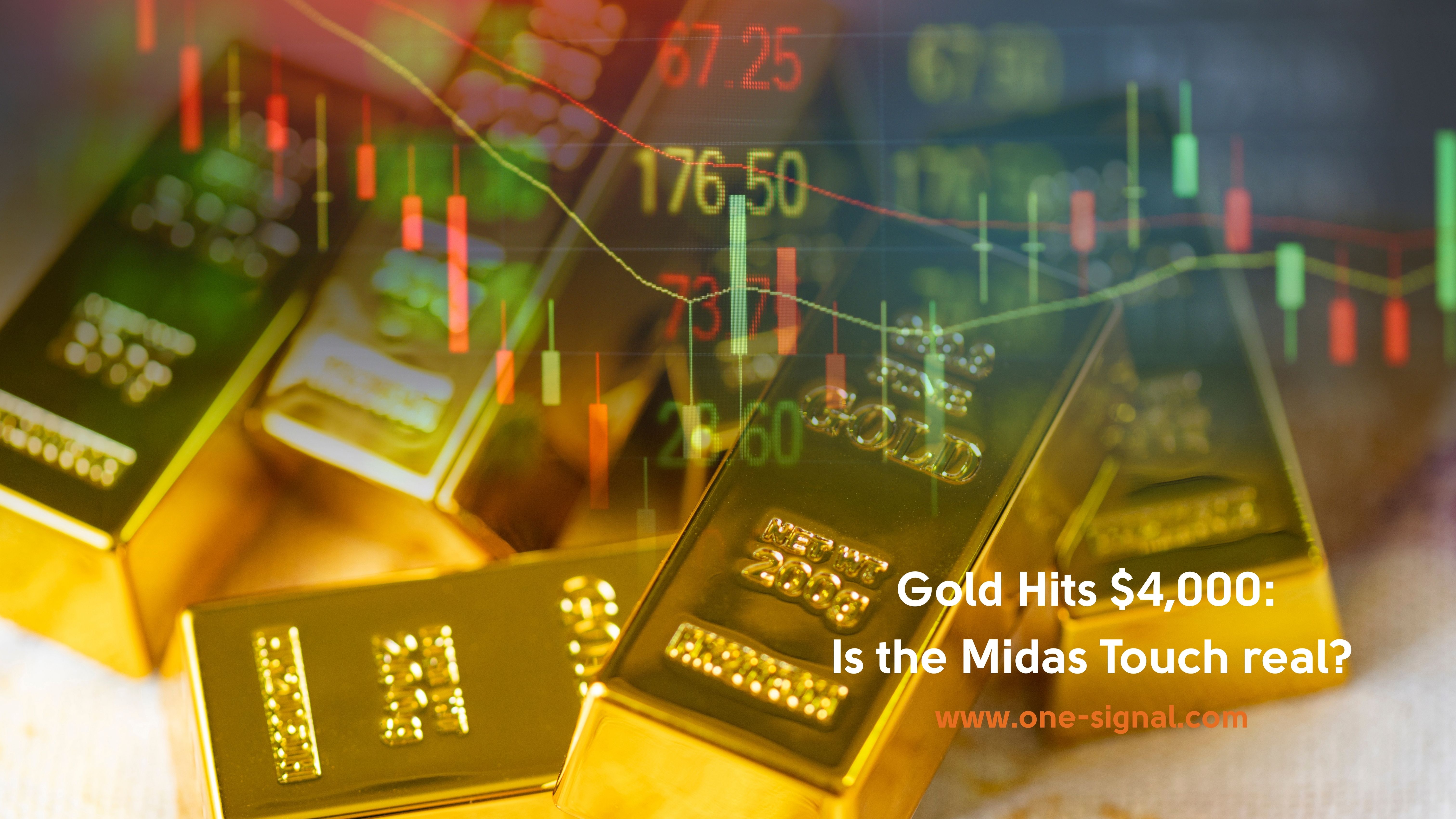
Gold just did it again: the shiny metal that never goes out of style smashed through $4,000 an ounce for the first time ever.
One of the first lessons any investor learns is simple: gold is the ultimate safe-haven asset. When markets panic, currencies wobble, and confidence fades, gold doesn’t just survive, it shines. “Always keep it in your portfolio as a hedge” is a sentence we have all heard, multiple times. That’s why for centuries, it’s been seen as a timeless store of value, a quiet but powerful anchor in every well-balanced portfolio.
For me, that understanding runs deeper than charts and data. Growing up to Middle Eastern immigrant parents, gold wasn’t just an investment, it was tradition, security, and prideall wrapped into one. Our families measured stability not only by savings accounts, but by the pieces of gold tucked away for the future, bracelets,coins, heirlooms that carried both value and history. Something to grab and goif needed.
And now, as gold crosses $4,000an ounce, it feels like the world has rediscovered its Midas touch, that mythical ability to turn everything into gold. Except this time, it’s not a legend. It’s the market’s collective instinct coming back to life.
History has a golden pattern
Gold’s relationship withhuman panic is almost poetic — it shines brightest when the world looks darkest. Every few decades, the same dance repeats: crisis hits, currencies wobble, and investors rediscover their primal urge to hold something solid.
- 1930s: The Great Depression & the Gold Standard Collapse
When global economies fell apart, governments clung to gold like a lifeboat, until they couldn’t anymore. The U.S. famously banned private gold ownership in 1933, only to revalue gold from $20 to $35 per ounce a year later. Translation: instant devaluation of the dollar and the first modern gold boom.
- 1970s: Inflation Gone Wild
When the U.S. cut the cord from the gold standard in 1971, the metal was set free and it soared. By 1980, gold hit $850/oz, a 2,400% increase in just a decade.The culprits? Oil shocks, runaway inflation, and Cold War anxiety. Basically,everyone lost faith in paper money.
- 1980: Gold shot to $850/oz (a record then) as inflation ran wild and oil pricesexploded after the Iranian Revolution.
- 2008: The Global Financial Crisis
No need to repeat the story here, if you are reading this article, you were oldenough to experience it yourself, but banks were melting down, and gold was theone thing that didn’t need a bailout. Prices rocketed from around $700 to over$1,900 by 2011. As the Fed unleashed QE (quantitative easing), investors rushedto anything that couldn’t be printed.
- 2011: It hit $1,920/oz when Europe’s debt crisis met America’s credit downgrade - acocktail of fear and money printing.
- 2020: The Pandemic Panic
Lockdowns. Stimulus checks. Trillions in new money. Gold surged past $2,000/oz for the first time as people realized“cash under the mattress” didn’t feel that safe anymore.
- 2025: The Age of Anxiety, Upgraded
Fast-forward to today: inflation’s lingering, debt is ballooning, and geopolitical risks are everywhere. Gold just broke $4,000, and once again, the same old pattern repeats, when in doubt, buy what can’t be made in a factory.
Throughout history, gold hasbeen less of a commodity and more of a collective emotional reflex — theworld’s “in case of emergency, break glass” asset.
Why Gold is the“It” asset again
1. Fear never goes out of fashion
When governments look overwhelmed and currencies look tired, people go back towhat’s real, and nothing says “real” like a metal you can literally hold in your hand.
2. Central Banks are hoarding like dragons
Emerging economies are quietly building gold reserves. China and Russia in particular have beenstacking bars for years - not just as a hedge, but as a statement: they don’t want all their wealth tied to the dollar anymore.
3. The Dollar lost its mojo
The U.S. dollar, once king of global confidence, has been wobbling under the weight of debt and rate-cutexpectations. A weaker dollar makes gold cheaper for international buyers and that’s been fueling demand.
4. Inflation’s still whispering in the background
Sure, inflation cooled offthe headlines, but it hasn’t disappeared. Real yields remain low, and gold —being the world’s “anti-inflation insurance” — loves that.
5. Momentum meets psychology
Markets run on stories as much as numbers. Once gold crossed the $3,800 line, the narrative took over. Traders who ignored gold for years suddenly didn’t want to miss out. Cue FOMO.
What’s next: glitter or correction?
· Goldman Sachs now sees gold hitting $4,900/ozby 2026.
· J.P. Morgan predicts a more modest $3,700–$4,000 range by year-end.
· Optimists are calling for $5,000,while sceptics warn that every gold rush eventually needs to catch its breath.
· At ONE-SIGNAL, we have a positive for the next 6 months, but are anticipating a moderate decline after that
Gold doesn’t move in straightlines. After every run, there’s usually a cooldown (and a few broken dreams).
But one thing’s for sure: the world’s love-hate relationship with gold is still going strong. It’s the one asset that keeps proving - no matter how digital, modern, or chaotic things get - that human instinct hasn’t changed much since ancient times.
Gold isn’t just another investment. It’s a mirror reflecting global fear, greed, and hope all at once.
And right now, that mirror’s shining brighter than ever.
After all, when the world feels uncertain, evencynics start believing in the Midas touch again.
Disclaimer: ONE-SIGNAL provides market insights and data for informational purposes only.We do not offer personalized financial advice, recommendations, or brokerageservices. Past performance does not guarantee future results. Trading andinvesting involve risk, including possible loss of capital.





